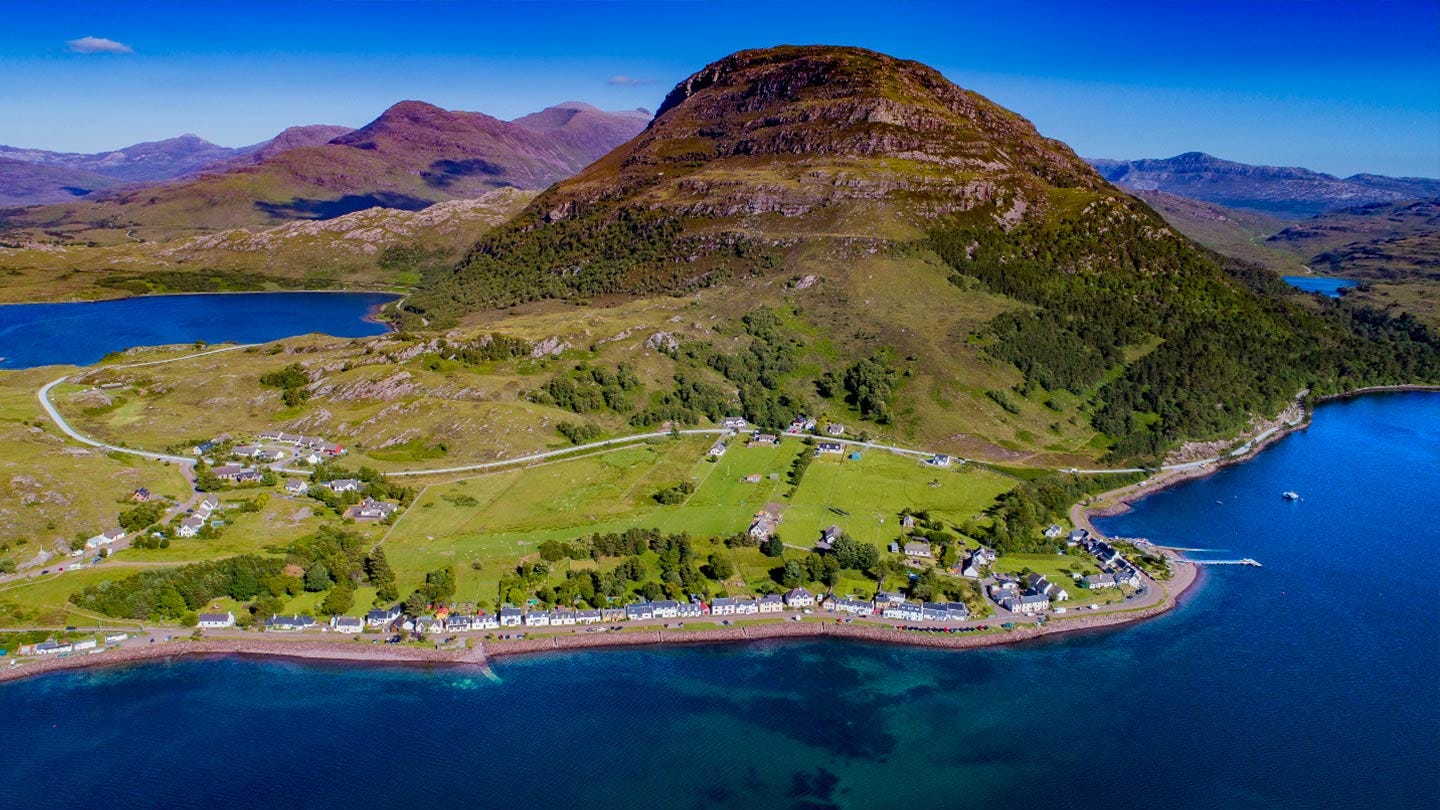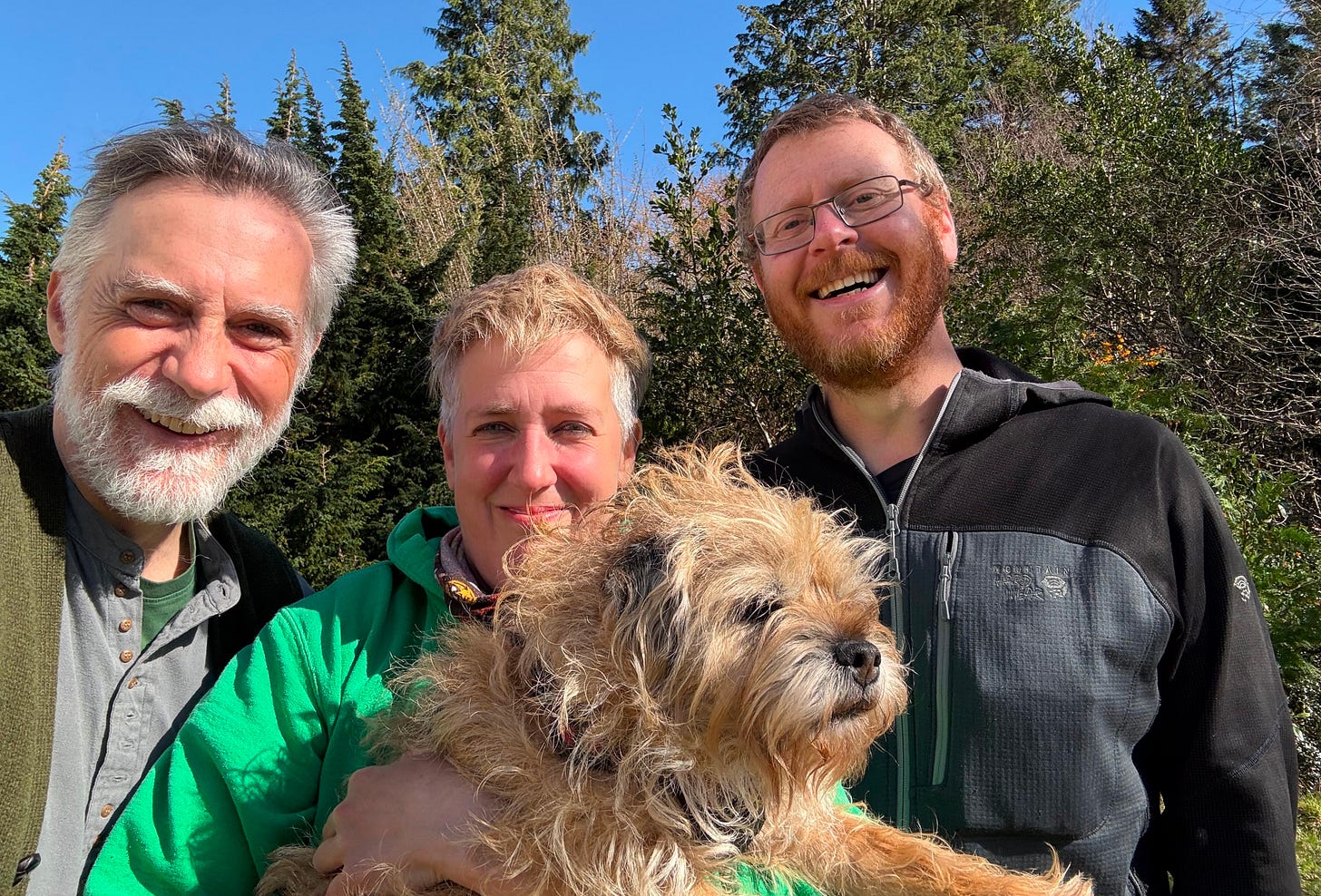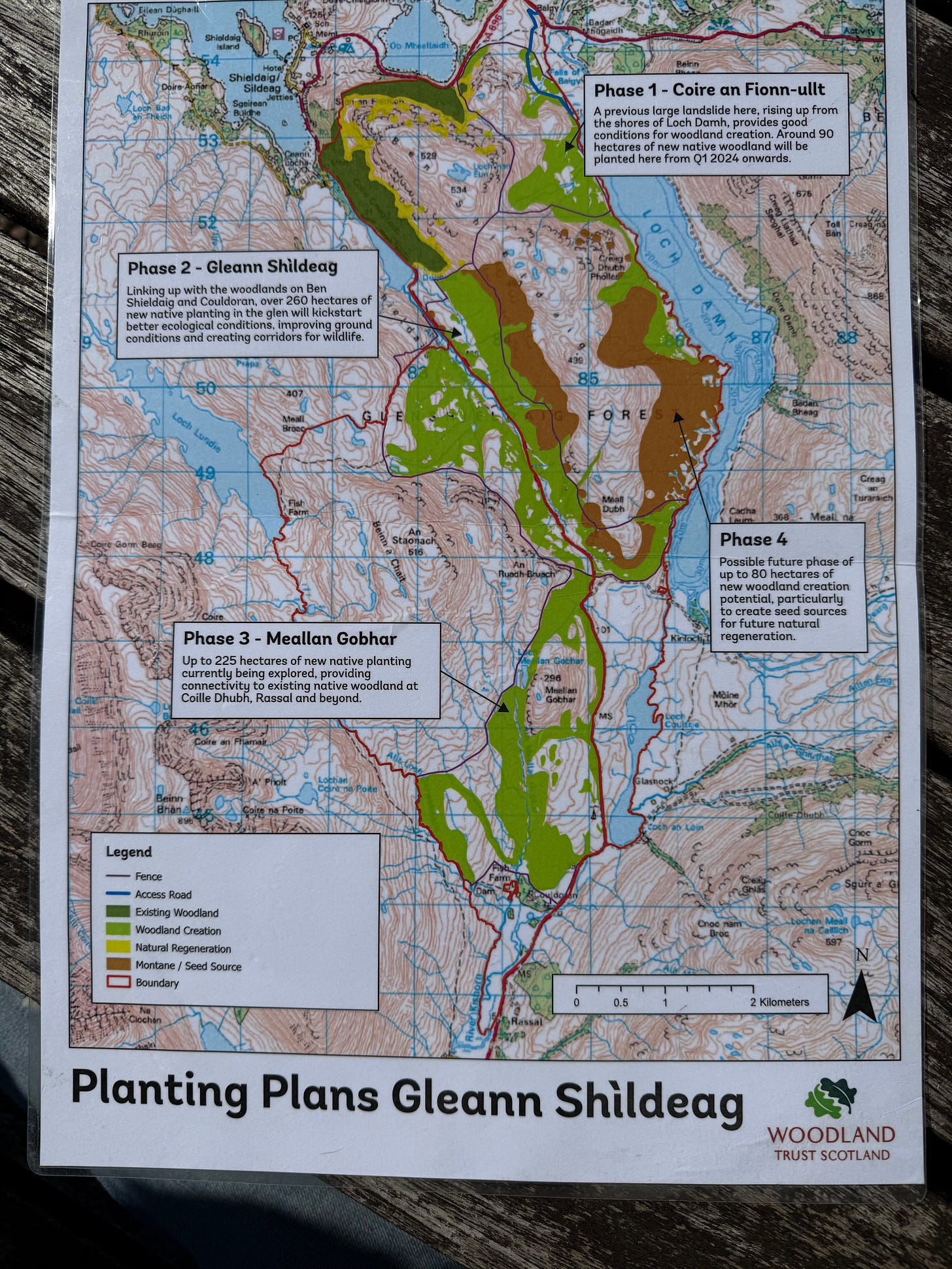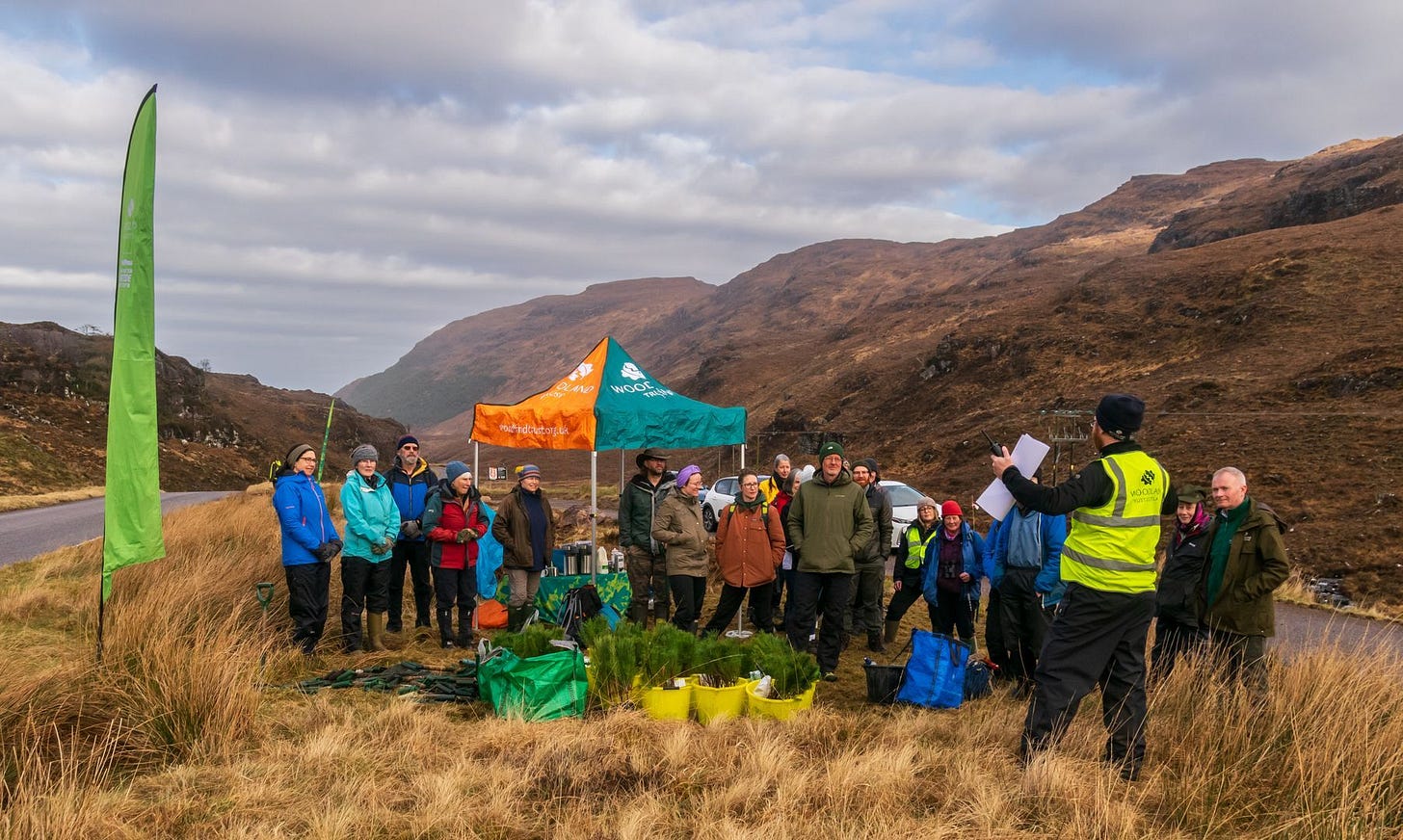On my way to the north-western coast of Scotland, I put in a stop at Couldoran House to meet up with the Woodland Trust Scotland’s estate manager Malcolm Turner and estate ranger Caz Austen to hear about their big plans. You see, the trust bought a mountain - and that was just the start of it!
In 2019, the Woodland Trust acquired its first mountain, Scotland’s Ben Shieldaig, for its important and rare woodland habitats, and its potential for new woodland. In 2021 the trust followed it up with the purchase of the neighboring Couldoran estate to create more woodlands and thus essential wildlife corridors. These two estates are now managed as one big estate called Gleann Shìldeag.
The Woodland Trust, established in 1972, is the UK’s largest conservation charity and has a simple and hopeful vision: “a UK rich in native woods and trees for people and wildlife.” Depending on where you are, you’ll know them and their efforts of creating, protecting and restoring woodlands as the Woodland Trust, the Woodland Trust Scotland, the Woodland Trust Northern Ireland or Coed Cadw (Woodland Trust Wales).
The place I met Malcolm and Caz, Couldoran House, is the center of the 4’500-acre estate that features mountains, rivers and lochs. The neighboring Ben Shieldaig lands, by the way, are nearly as big with their 3’800 acres. When we sat down outside the big house, with coffee, tea, bisquits and a fantastic view, I was suitably impressed. Alas, Malcolm mentioned that the Woodland Trust Scotland is selling the house - well, someone’s going to love it!
Here are two images of Couldoran House, one from our time, the other from the thirties … spot any woodland difference?


A few words about the Woodland Trust’s incredible journey so far: From its beginnings in Devon, it grew fast and, just twenty years later, it already celebrated its 500th wood. By 2002, the trust had planted more than five million trees and owned 1’100 woods. Just ten years later they had planted sixteen million trees.
By 2022, another ten years later, a whopping fifty million trees were growing across the UK thanks to the Woodland Trust. They clearly know how to engage and activate their members. Between June 2023 and May 2024, they brought together a brilliant £84.2 million. In that period, they planted twenty square kilometers of new woodland and nursed a record 1’040 hectares of woods back to health. By now they manage sixty woods in Scotland that cover 11’000 hectares.
The Ben Shieldaig lands include an area of ancient semi-natural birch woodland as well as a significant remnant of ancient Caledonian pinewood. Malcolm showed me below map. You can see Ben Shieldaig and the dark-green existing woodlands at the top. Near the bottom you’ll spot Couldoran House. You also see the extensive areas in light green color - all of that is about woodland creation. I’ve driven from Couldoran House to Ben Shieldaig and I can tell you, those are huge endeavors.
Later on, during my drive through Glen Shieldaig, I saw the majority of land in degraded condition. I know, some will be up in arms when I call it that. Some will say that those seemingly barren landscapes are full of life. But I’m entirely with the Woodland Trust. What you see, and what you don’t see, tells a story. The story I see is one of potential.
There won’t be trees everywhere, obviously. Some planting efforts will succeed, others won’t. Climate and soil conditions mean that woodlands may need twice as long to grow here as they might, e.g., in the Cairngorms. Or transformations in just twenty-five years such as Carrifran in Scotland’s south.


There’s the potential. There’s also the dire need for these woodland corridors up here as much as elsewhere. As Caz explained, soil nutrients have been leeched off these hills over centuries - as she put it, “with things being taken out and nothing put back in” - and so their efforts will take years, many years.
Here you see Malcolm instructing planting volunteers in March - look at the landscape and you’ll have a good sense of the challenge, and the time required, to reach woodland connectivity.
I have no doubt that, with extensive planting, fencing and deer culling efforts, the time will come - and it may be fifty years and more - when solid woodland corridors allow for nature to flow once more. Squirrel populations have been introduced - but they cannot forever live in isolation. For genetic diversity, they, same as other animals, need to be able to travel.
Woodlands will make that happen.
Cheers,
PS: These wonderful lands are not exactly around the corner for most people. If you can come this way, you’ll love it (beware of midges and tourists - so think about picking pre-spring and post-summer seasons). But if you can’t travel to these ancient landscapes, here’s something you might love - a joyful Woodland Trust podcast that, for twenty minutes, takes you right into Ben Shieldaig’s nature.
If you enjoy the Rewilder Weekly …
… consider supporting my work. Your paid subscription will help generate the funds needed to realize a unique rewilding book I’m working on. And, of course, that paid subscription also ensures that the Rewilder Weekly will always keep going for those who cannot afford to pay. A thousand thanks!










